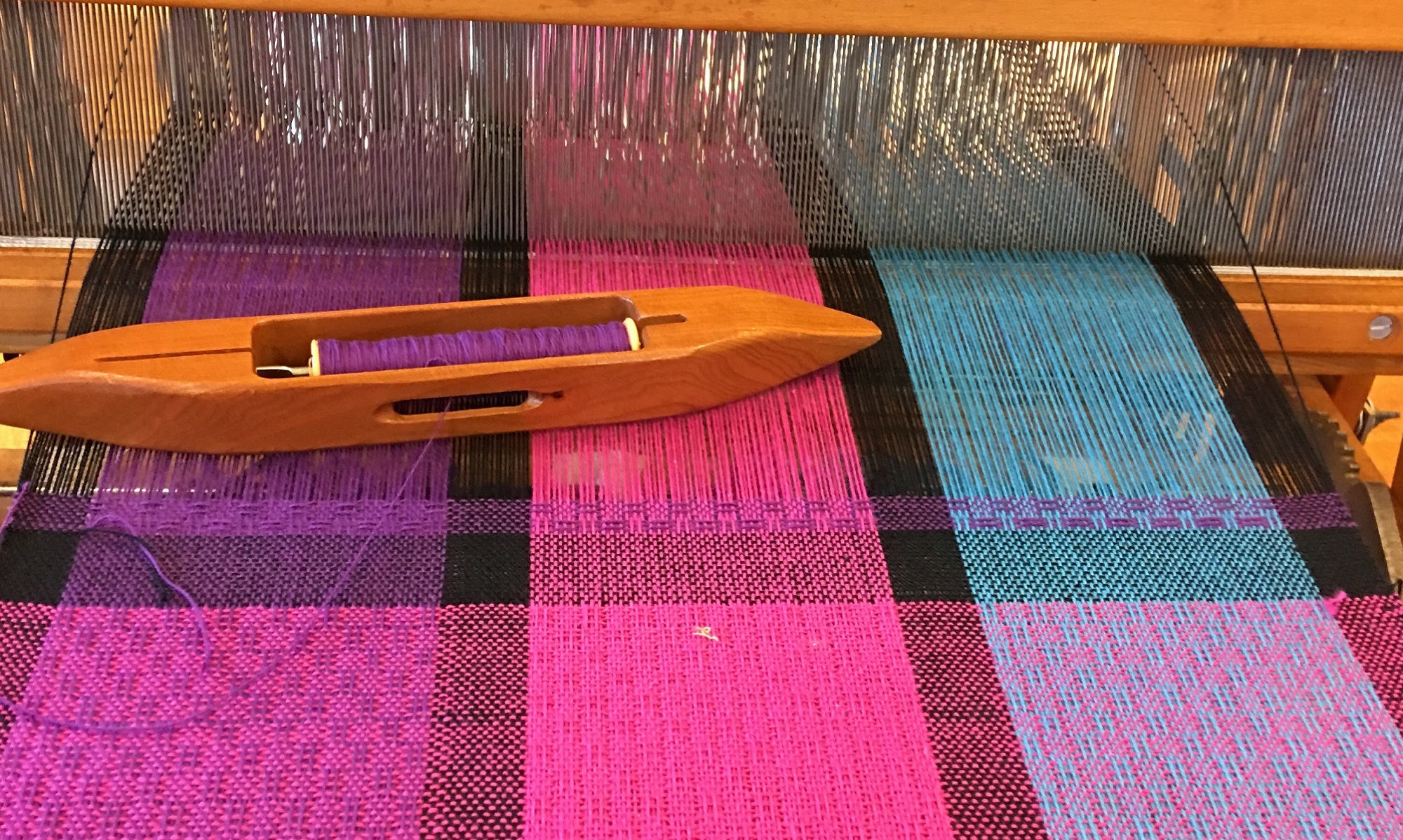Measured Steps – Handmade Socks that pamper your feet!
Harry Potter and Professor Dumbledore had a conversation about a mirror that reflects to you the deepest desire of your hearts. Harry asked Dumbledore what he saw…
“I? I see myself holding a pair of thick, woolen socks.”
Harry stared.
“One can never have enough socks,” said Dumbledore. “Another Christmas has come and gone and I didn’t get a pair. People will insist on giving me books.”
~ Harry Potter and the Sorcerer’s Stone
Handmade socks are a gift of love. The average pair of adult socks contains about 25,000 stitches. I couldn’t keep up with my family’s demand for them in a timely way, so bought a circular sock machine to help speed up the process a little bit. Now you too can benefit from my purchase.
My line of Measured Steps socks are made with a reproduction of a handcranked, antique, circular sock knitting machine. Circular sock machines (CSMs) that date back to the latter half of the 1800s can still be found today and although many are not in working condition, there are quite a few reconditioned machines that are still in use. The reproductions work the same as the antique machines with a few slight improvements such as the metal used, the use of precision lathes to create the components of the machines, fancy paint jobs and a wider variety of cylinders and ribbers, but are virtually the same as those made in the late 19th and early 20th Centuries. You can read more in my blog post about them.
 CSMs take a good deal of practice and skill to learn to use to make quality socks with good small stitches. You don’t just attach the yarn, crank a bit and get a sock. You need the same skill set (used in different ways) to hand knit a sock on knitting needles as you do to hand crank a sock. The cranking just allows you to do it a bit faster so that it is cost effective to sell. I could never hand knit socks for sale, they take too long and would cost over $100 a pair to make more than a couple of dollars an hour for my time.
CSMs take a good deal of practice and skill to learn to use to make quality socks with good small stitches. You don’t just attach the yarn, crank a bit and get a sock. You need the same skill set (used in different ways) to hand knit a sock on knitting needles as you do to hand crank a sock. The cranking just allows you to do it a bit faster so that it is cost effective to sell. I could never hand knit socks for sale, they take too long and would cost over $100 a pair to make more than a couple of dollars an hour for my time.
First I choose design elements (plain stockinette with a hung hem, a mock rib, true ribbed sock or even cables and lace with much hand manipulation) cast on to the machine, manipulate stitches by hand to create the hems or switch stitches from cylinder needles to ribber needles and back again, shape the heels and toes with short rows, then close the toes by hand off the machine with a seamless grafting technique called a Kitchener stitch. The machines can easily drop stitches that have to be fixed. I have to watch the yarn delivery and tension, the needle latches opening and closing properly and a few other things all at the same time to avoid problems.
I choose high quality yarns that are usually blends of washable, soft wool and nylon and perhaps some other fibers such as silk, cashmere or viscose from bamboo. Wool has natural elasticity and is one the best fibers for moisture control. It provides warmth in cold temperatures, but can be worn in warm weather as well due to its ability to breathe and manage moisture. It can absorb up to 1/3 of its weight in moisture before feeling damp. The nylon provides durability. Other fibers such as bamboo or silk bring their own properties to the blend.
To size my socks, I must knit samples to find the right tension with a particular yarn, and then calculate for different foot sizes with some math. My machine has different cylinders with different stitch counts to help produce socks of the correct size without compromising the best stitch gauge for the sock.

Measured Steps wool blend socks are comfortable to wear and a treat for the feet. Most of my socks are machine washable and dryable (gentle cycle with cool water and tumble dry low) and will last for years of wear with proper care. They do not have seams across the toe box like commercial socks. They do not fit as snugly as commercially made socks which usually have lycra or elastic to help them fit a wide range of sizes. Wool will stretch a bit with wear. They feel more snug when you first put them on and a bit looser by the end of the day, but bounce right back into shape when washed and dried. They are a little thicker than most commercially made socks, so you may need a slightly looser shoe. I can also knit with thicker yarns to create warm and cushy boot socks.

